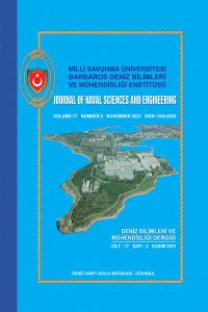THERMODYNAMIC MODEL OF THE CYCLE OF SPARK IGNITION ENGINE WITH EXHAUST GAS RECIRCULATION
Buji ile ateşlemeli motor, egzoz gazı geri verilmesi
___
Heywood, J. B. (1988). Internal Combustion Engine Fundamentals. New York: McGraw-Hill.Turns, S. R. (1996). An Introduction to Combustion. New York: McGraw-Hill.
Vibe, I. I. (1970). Brennverlauf und Kreisprozess von Verbrennungsmotoren. Berlin: VEB Verlag Technik.
Annand, W. J. D. (1963). Heat Transfer in the Cylinder of Reciprocating Internal
Combustion Engines. Proceedings of the Institution of Mechanical Engineers, 177, 973-990
Hanson, R. K., & Salimian, S. (1984). Combustion Chemistry. W. C. Gardiner, Jr.(ed.). Survey of Rate Constants in the N-H-O System.
Ferguson, C. R., & Green, R. M., & Lucht, R. P. (1987). Unburned Gas Temperatures in an Internal Combustion Engine. Combustion Science and Technology, 55, 63-81.
Stull, D. R., & Prophet, H. (1971). JANAF Thermochemical Tables. (2nd ed.). National Bureau of Standarts. NSRDS-NBS 37.
Warnatz, J., Maas, U., & Dibble, R. W. (1996). Combustion. Berlin: Springer-Verlag.
Bowman, C. T. (1992). Control of Combustion-Generated Nitrogen Oxide Emissions: Technology Driven by Regulations. Twenty-Fourth Symposium on Combustion, The Combustion Institute.Pittsburgh.
Flagan, R. C.,& Seinfield, J. H. (1988). Fundamentals of Air Pollution Engineering. New Jersey: Prentice-Hall.
Öğüçlü, Ö. (1998). Thermodynamic Model of The Cycle of Spark Ignition Engine.
Msc Thesis, Graduate School of Natural And Applied Sciences of Dokuz Eylul University, İzmir.
- ISSN: 1304-2025
- Yayın Aralığı: 2
- Başlangıç: 2003
- Yayıncı: Milli Savunma Üniversitesi Deniz Harp Okulu Dekanlığı
Özgün SELVİ1, Hasan AL-DULAİMİ2
ABC ANALİZİ YÖNTEMİ İLE ENVANTER SINIFLANDIRMASI
Erkan KIYAK, Oğuz TİMUŞ, Mehmet KARAYEL
THERMODYNAMIC MODEL OF THE CYCLE OF SPARK IGNITION ENGINE WITH EXHAUST GAS RECIRCULATION
WAVE ENERGY CONVERSION SYSTEMS
SABİT HEDEFLERE KARŞI BİSTATİK SONOBOY YERLEŞİM KONFİGURASYONU
